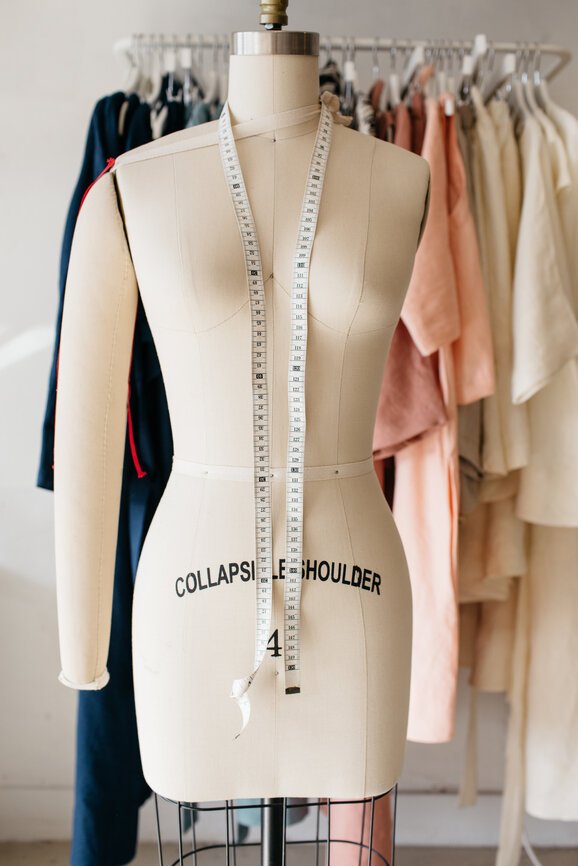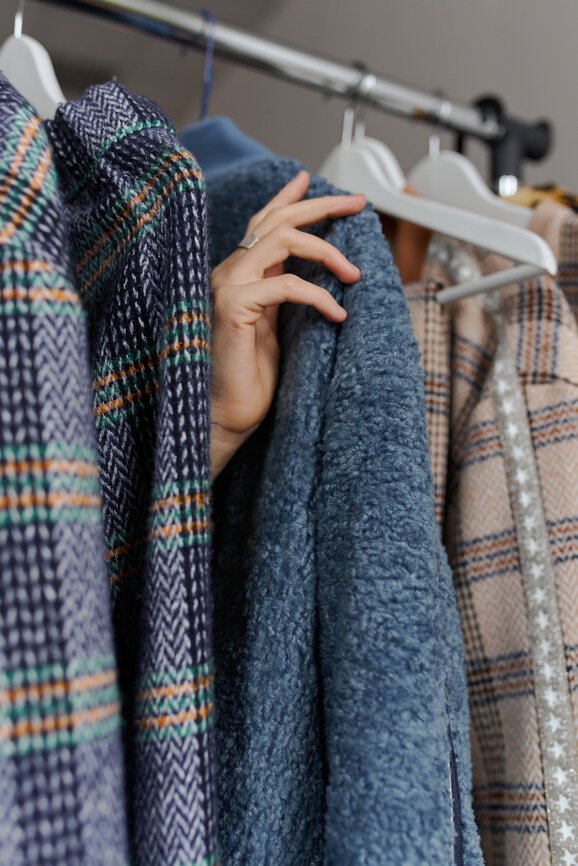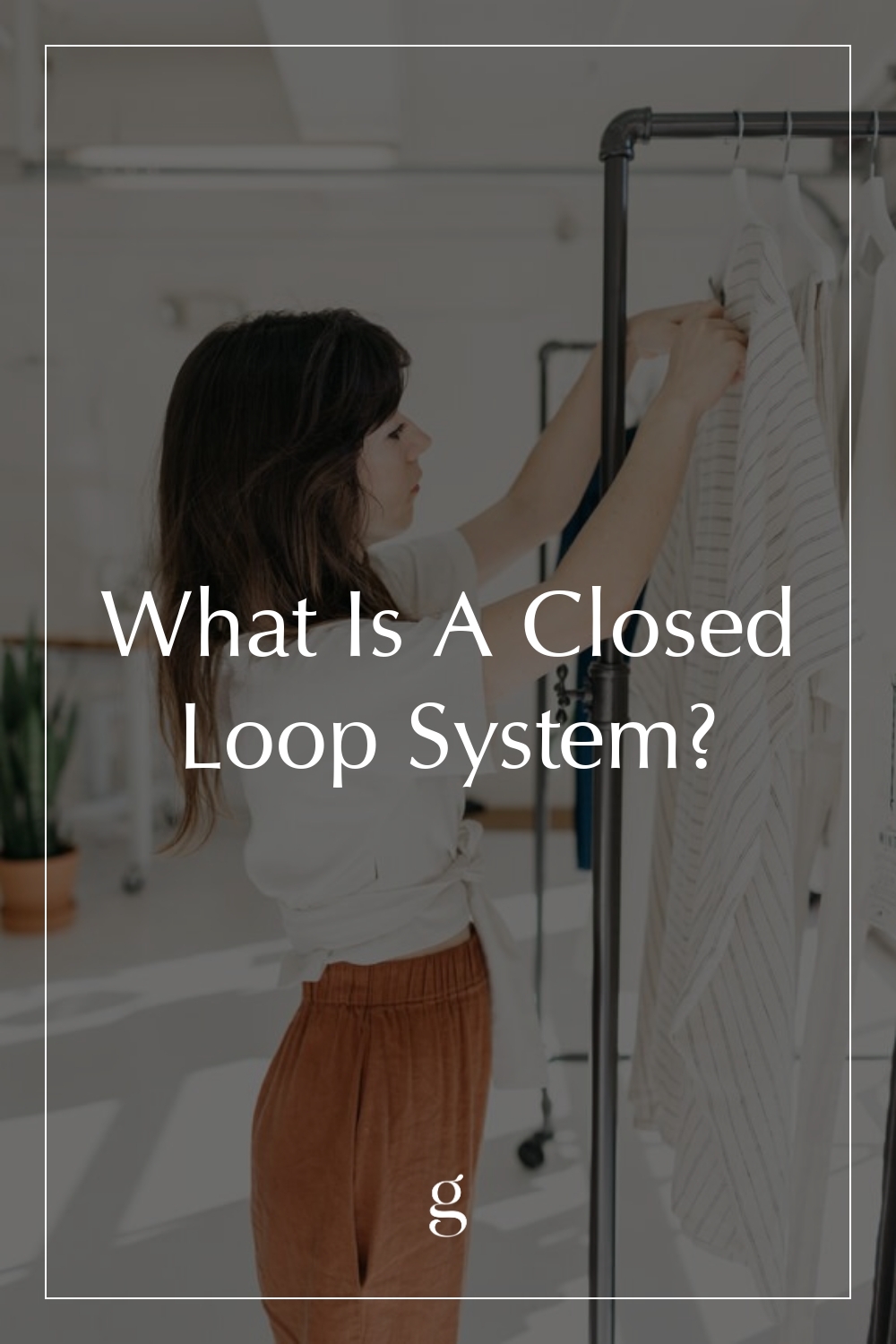
What Is A Closed Loop System?
Circular Design As The Way Forward
The fashion industry has a lot of jargon, and the rise of conscious fashion only makes understanding it all a more difficult task. There’s ethical fashion, sustainable fashion, slow fashion, and fast fashion. And then, there are concepts such as circular design and closed loop systems. These new ideas often signal progress, though unpacking them can prove overwhelming. Don’t worry; we’re here to help.
From fiber to finish, a garment has many stages in its life. Even if a piece is new, it’s considered to be near the end of its journey once it reaches your door. You can donate the clothes you no longer need, upcycle them at home, or toss them in the trash. But what if there was another, more sustainable option?
The Problem: Linear, Open Loop Systems
Currently, the fashion industry—and most consumer industries—rely on open loop systems because they’re faster and easier to operate. An open loop system is one in which the input does not depend on the output. And this model allows brands to design, produce, and sell clothing without worrying about what occurs at the end of a garment’s life. An open loop system does little to account for the impact of fashion on the planet or people.
“An open loop system is one in which the input does not depend on the output… [it] does little to account for the impact of fashion on the planet or people.”
“It’s estimated that for every one pound of consumer waste, 40 pounds were created upstream by the commercial entities, [or] pre-consumer,” explains Camille Tagle of FABSCRAP, a fabric recycling nonprofit based in New York. While the industry tends to harp on textile waste post-consumer, the supply chain itself remains a hugely wasteful system. To tackle fashion’s waste problem, we need to consider the entire system.
Regardless of whether a brand falls under the fast fashion umbrella or not, open loop systems run most fashion businesses. “It really doesn’t matter where you sit in the industry, you could be mass market, you could be contemporary, or you could be luxury… no matter what if you’re designing, you are creating waste,” says Tagle.
“The pandemic has revealed how poorly structured traditional supply chains are within the industry.”
Companies worried about their bottom line only focus on efficient output, no matter the consequence. This includes luxury brands, independent labels, and even sustainable fashion companies. Every effort to lower fashion’s environmental impact is beneficial, yet continuing to rely on open loop systems keeps the industry from actual progress.
However, this model not only has environmental and human labor costs but it also hampers a brand’s ability to produce through hard times. The pandemic has revealed how poorly structured traditional supply chains are within the industry. Now is the time for companies to change their ways.
The Solution: Sustainable Systems for a Circular Economy
Closed loop systems are essential in creating a circular economy, which focuses on regeneration instead of careless production. In regards to fashion, a closed loop system is a design and production method that works to keep clothes in circulation for as long as possible (also called circular design).
As the current take-make-dispose model doesn’t concern itself with what happens to garments once they’re in the consumers’ hands, a closed loop system seeks to curb the textile waste problem by extending and renewing garment life, often through upcycling and repair. This production method places the responsibility on clothing brands to be more mindful about the entire life cycle of the garments they make.
“Fashion businesses must be responsible and accountable for the waste they produce.”
From concept to end-of-life, a closed loop brand considers the ramifications of each step in its process. And in this way, many agree that circular design goes even further than sustainable production. Closed loop brands argue that using sustainable or recycled materials to create apparel isn’t enough; fashion businesses must be responsible and accountable for the waste they produce.
Unfortunately, at current, most brands still rely on the consumer to be informed and take the initiative to send back clothing when they no longer want it. Brands such as For Days try incentivizing customers to return and replace items with ones made from recycled materials. Other companies establish separate marketplaces for their upcycled goods; think Worn Wear from Patagonia and Renew from Eileen Fisher. Both of these brands are revered by the sustainable fashion community, and still, they must expand their work in order to support a circular economy.
All of this begs the question: What will it take for true structural change? It seems impossible for independent fashion businesses to single-handedly change the industry, and regulating at scale currently appears out of reach. Large fashion corporations will need to begin taking responsibility for their waste in a big way if closed loop systems stand a chance at becoming the future of fashion.
“Holding brands accountable is an act of love when we know they can do more.”
Until then, we can practice closed loop systems at home by reusing what we already have, trying our hand at upcycling, and finding creative ways to keep our possessions in circulation. We can also help by supporting businesses committed to working towards a closed loop system (like For Days), and we can voice our concerns to those who don’t (try reaching out via email or on social). Holding brands accountable is an act of love when we know they can do more.
Audrey Stanton was born and raised in the Bay Area and is currently based in Los Angeles. She works as a freelance writer and content creator with a focus in sustainable fashion. Audrey is deeply passionate about conscious living and hopes to continue to spread awareness of ethical consumption.




